AND
-
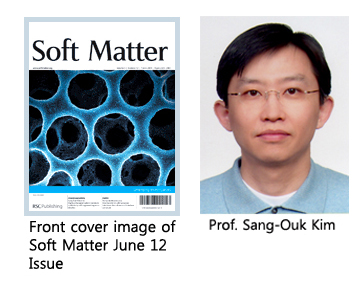 Prof. Sang-Ouk Kim Featured on the Cover of Emerging Investigator Special Issue
KAIST Prof. Sang-Ouk Kim of the Department of Materials Science and Engineering was featured on the cover of the Emerging Investigator Special Issue published by Britain"s Royal Society of Chemistry on June 21, university authorities said on Monday (June 22).
The special issue shed spotlight on 18 up-and-coming scientists who have been selected through the recommendation and rigorous screening process of the editorial and advisory boards of the Royal Society of Chemistry. The 18 scientists consist of six from the American continent, 10 from Europe, one from Japan and one from Korea.
The journal introduced Prof. Kim"s paper, titled "Highly entangled carbon nanotube (CNT) scaffolds by self-organized aqueous droplets." Kim explained in the paper that the cellular CNT demonstrated high electrical conductivity and field-emission properties, which is potentially useful for various applications in electronics and energy storage devices.
2009.06.24 View 15125
Prof. Sang-Ouk Kim Featured on the Cover of Emerging Investigator Special Issue
KAIST Prof. Sang-Ouk Kim of the Department of Materials Science and Engineering was featured on the cover of the Emerging Investigator Special Issue published by Britain"s Royal Society of Chemistry on June 21, university authorities said on Monday (June 22).
The special issue shed spotlight on 18 up-and-coming scientists who have been selected through the recommendation and rigorous screening process of the editorial and advisory boards of the Royal Society of Chemistry. The 18 scientists consist of six from the American continent, 10 from Europe, one from Japan and one from Korea.
The journal introduced Prof. Kim"s paper, titled "Highly entangled carbon nanotube (CNT) scaffolds by self-organized aqueous droplets." Kim explained in the paper that the cellular CNT demonstrated high electrical conductivity and field-emission properties, which is potentially useful for various applications in electronics and energy storage devices.
2009.06.24 View 15125 -
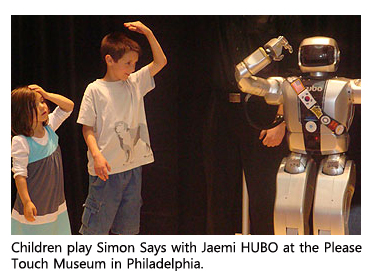 U.S. and Korean Researchers Unveil Newest Research Team Member: Jaemi the Humanoid
- Project aims to enable humanoids to interact with people and their environment
June 1, 2009-- A Drexel University-led research team late last week unveiled the newest, most central member of its collaboration with a team of Korean researchers: Jaemi, a humanoid (HUBO). Jaemi HUBO embodies efforts to advance humanoid development and enhance the concept of human-robotic interaction. The project"s goal is to enable humanoids to interact with their environment, and enhancement plans include enabling the humanoid to move over rugged terrain, in unstructured environments and to interact socially with humans and handle objects.
The five-year project, funded through the National Science Foundation (NSF) Partnership for International Research and Education (PIRE) program, seeks transformative models to catalyze discovery through international research collaboration and train U.S. students and junior researchers to effectively think and work in global teams.
"The field of robotics is among the top 10 technology areas considered engines for economic growth. Korea understands this and is aggressively pursuing robotics. To stay competitive, the U.S. must do the same," said Mark Suskin, acting deputy director of NSF"s Office of International Science and Engineering. "NSF"s PIRE program and this robotics collaboration in particular, enable the U.S. to capitalize on research in other countries and remain competitive."
The PIRE research team is composed of researchers at The University of Pennsylvania, Colby College, Bryn Mawr College and Virginia Tech in the United States; and Korea Advanced Institute of Science and Technology (KAIST), Korea University and Seoul National University in Korea.
The team obtained a version of KAIST"s HUBO humanoid, which it named Jaemi HUBO and decided to house it at Drexel University. KAIST HUBO lab has become a model of cutting advance humanoid research by relatively small teams working on tight budgets.
KAIST excels in humanoid leg and body design, biped gait (walking, running, kicking), balance (modeling and control system design), and hardware integration. U.S. robotics researchers tend to enjoy an edge in locomotion over rugged, unstructured terrain; manipulation/grasping; cognition, perception and human-robot interaction; and vision (image, understanding, navigation).
This collaboration of American and Korean researchers will seek to draw on the expertise of each researcher and take Jaemi HUBO to the next level of development--that is, to improve Jaemi"s capabilities to navigate and manipulate objects and interact with people in unstructured environments. Such capabilities demand information technologies like cognition, perception and networking areas. Targeted enhancement features include a capability to move over rugged terrain and in unstructured environments and to handle objects and interact socially with humans.
Jaemi HUBO will also educate the American public, particularly young people, about the science of robotics. This education process began at the Please Touch Museum in Philadelphia on May 28, 2009, when Jaemi HUBO was unveiled and introduced to a crowded audience of children and a few adults. Neither male nor female,Jaemi connected with the children, boys and girls alike. Guided by a Drexel University graduate student, Jamei moved, spoke, danced, shook hands and lead the children in a game of Simon Says. Such access to Jaemi HUBO starkly contrasts with that afforded by other high-profile humanoids that are often protected trade secrets, largely inaccessible to the public.
Museum curators are pleased to have had Jaemi visit and entertain kids during the weekend. "At the Please Touch Museum, we promote learning through a variety of senses," said J. Willard Whitson,the museum"s vice president for exhibits and education. "A humanoid not only embodies our goal of building layers of knowledge in young people, but Jaemi helps all of us celebrate the playful side of technology."
Jaemi HUBO is now at its permanent home at Drexel University, from which travel and guest appearances may be arranged by appointment. Journalists interested in meeting and interviewing Jaemi HUBO and other research team members are encouraged to contact Lisa-Joy Zgorski at lisajoy@nsf.gov. (Press Release of U.S. National Science Foundation)
2009.06.19 View 17032
U.S. and Korean Researchers Unveil Newest Research Team Member: Jaemi the Humanoid
- Project aims to enable humanoids to interact with people and their environment
June 1, 2009-- A Drexel University-led research team late last week unveiled the newest, most central member of its collaboration with a team of Korean researchers: Jaemi, a humanoid (HUBO). Jaemi HUBO embodies efforts to advance humanoid development and enhance the concept of human-robotic interaction. The project"s goal is to enable humanoids to interact with their environment, and enhancement plans include enabling the humanoid to move over rugged terrain, in unstructured environments and to interact socially with humans and handle objects.
The five-year project, funded through the National Science Foundation (NSF) Partnership for International Research and Education (PIRE) program, seeks transformative models to catalyze discovery through international research collaboration and train U.S. students and junior researchers to effectively think and work in global teams.
"The field of robotics is among the top 10 technology areas considered engines for economic growth. Korea understands this and is aggressively pursuing robotics. To stay competitive, the U.S. must do the same," said Mark Suskin, acting deputy director of NSF"s Office of International Science and Engineering. "NSF"s PIRE program and this robotics collaboration in particular, enable the U.S. to capitalize on research in other countries and remain competitive."
The PIRE research team is composed of researchers at The University of Pennsylvania, Colby College, Bryn Mawr College and Virginia Tech in the United States; and Korea Advanced Institute of Science and Technology (KAIST), Korea University and Seoul National University in Korea.
The team obtained a version of KAIST"s HUBO humanoid, which it named Jaemi HUBO and decided to house it at Drexel University. KAIST HUBO lab has become a model of cutting advance humanoid research by relatively small teams working on tight budgets.
KAIST excels in humanoid leg and body design, biped gait (walking, running, kicking), balance (modeling and control system design), and hardware integration. U.S. robotics researchers tend to enjoy an edge in locomotion over rugged, unstructured terrain; manipulation/grasping; cognition, perception and human-robot interaction; and vision (image, understanding, navigation).
This collaboration of American and Korean researchers will seek to draw on the expertise of each researcher and take Jaemi HUBO to the next level of development--that is, to improve Jaemi"s capabilities to navigate and manipulate objects and interact with people in unstructured environments. Such capabilities demand information technologies like cognition, perception and networking areas. Targeted enhancement features include a capability to move over rugged terrain and in unstructured environments and to handle objects and interact socially with humans.
Jaemi HUBO will also educate the American public, particularly young people, about the science of robotics. This education process began at the Please Touch Museum in Philadelphia on May 28, 2009, when Jaemi HUBO was unveiled and introduced to a crowded audience of children and a few adults. Neither male nor female,Jaemi connected with the children, boys and girls alike. Guided by a Drexel University graduate student, Jamei moved, spoke, danced, shook hands and lead the children in a game of Simon Says. Such access to Jaemi HUBO starkly contrasts with that afforded by other high-profile humanoids that are often protected trade secrets, largely inaccessible to the public.
Museum curators are pleased to have had Jaemi visit and entertain kids during the weekend. "At the Please Touch Museum, we promote learning through a variety of senses," said J. Willard Whitson,the museum"s vice president for exhibits and education. "A humanoid not only embodies our goal of building layers of knowledge in young people, but Jaemi helps all of us celebrate the playful side of technology."
Jaemi HUBO is now at its permanent home at Drexel University, from which travel and guest appearances may be arranged by appointment. Journalists interested in meeting and interviewing Jaemi HUBO and other research team members are encouraged to contact Lisa-Joy Zgorski at lisajoy@nsf.gov. (Press Release of U.S. National Science Foundation)
2009.06.19 View 17032 -
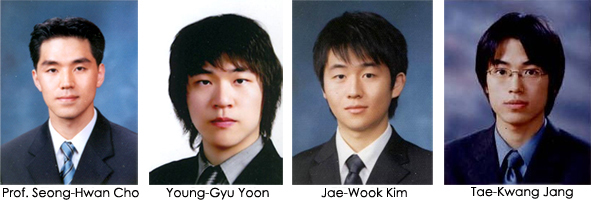 Prof. Cho's Team Awarded Best Paper Prize by IEEE
A team led by Prof. Seong-Hwan Cho of the School of Electrical Engineering and Computer Science, KAIST, won the 2009 Guillemin-Cauer Best Paper Award for their paper published in the IEEE Transactions on Circuits and Systems Journal last May, university authorities said on Thursday (June 4).
The team"s paper was entitled "A Time-based Bandpass ADC Using Time-Interleaved Voltage-Controlled Oscillators." The prize is given to a paper regarded as the best among about 350 papers published in the prestigious journal in the circuit theory area. Co-recipients of the award are Young-Gyu Yoon, Jae-Wook Kim and Tae-Kwang Jang. The award was presented at the annual 2009 International Symposium for Circuits and Systems in Taipei, Taiwan, on May 26.
The Institute of Electrical and Electronics Engineers or IEEE is an international non-profit, professional organization for the advancement of technology related to electricity. The New York-based organization has more than 365,000 members in about 150 countries making it the largest technical professional organization in the world.
2009.06.05 View 15962
Prof. Cho's Team Awarded Best Paper Prize by IEEE
A team led by Prof. Seong-Hwan Cho of the School of Electrical Engineering and Computer Science, KAIST, won the 2009 Guillemin-Cauer Best Paper Award for their paper published in the IEEE Transactions on Circuits and Systems Journal last May, university authorities said on Thursday (June 4).
The team"s paper was entitled "A Time-based Bandpass ADC Using Time-Interleaved Voltage-Controlled Oscillators." The prize is given to a paper regarded as the best among about 350 papers published in the prestigious journal in the circuit theory area. Co-recipients of the award are Young-Gyu Yoon, Jae-Wook Kim and Tae-Kwang Jang. The award was presented at the annual 2009 International Symposium for Circuits and Systems in Taipei, Taiwan, on May 26.
The Institute of Electrical and Electronics Engineers or IEEE is an international non-profit, professional organization for the advancement of technology related to electricity. The New York-based organization has more than 365,000 members in about 150 countries making it the largest technical professional organization in the world.
2009.06.05 View 15962 -
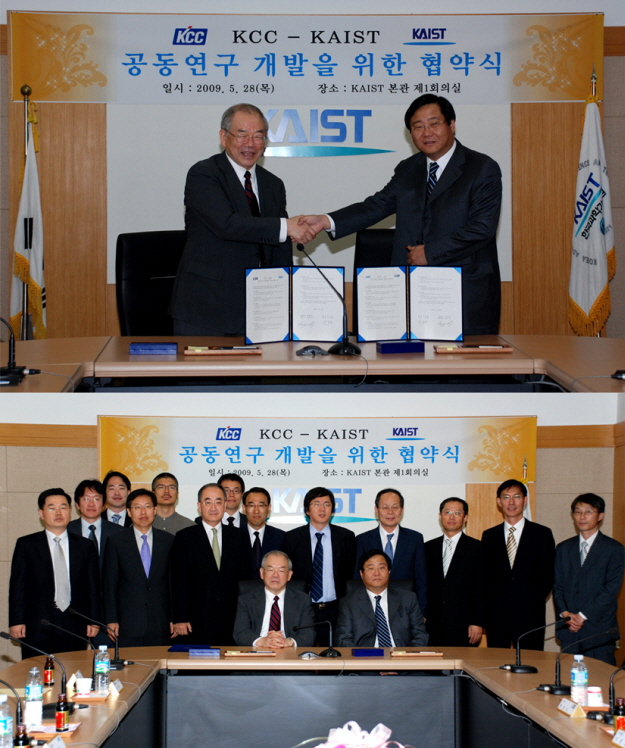 KAIST Signs Agreement for Industry-Academia Cooperation with KCC
KAIST signed an agreement for industry-academia cooperation with KCC, Korea"s leading supplier of building & industrial materials, on May 28, university sources said.
The agreement signed by KAIST President Nam-Pyo Suh and Mong-Jin Chung, Chairman of the KCC Business Group, calls for KAIST and KCC to conduct joint research for the development of new technologies in nano science, new materials areas and interdisciplinary areas.
Under the agreement, KCC will invest 5 billion won into the KAIST Institute for the NanoCentury over the next five years.
KCC Chairman Chung said: "Through this industry-academia cooperation agreement, we are seeking to give part of our profits back to community . We hope this agreement to contribute to the development of core technologies of the future in the new materials field, and nurturing specialized manpower."
2009.05.28 View 15257
KAIST Signs Agreement for Industry-Academia Cooperation with KCC
KAIST signed an agreement for industry-academia cooperation with KCC, Korea"s leading supplier of building & industrial materials, on May 28, university sources said.
The agreement signed by KAIST President Nam-Pyo Suh and Mong-Jin Chung, Chairman of the KCC Business Group, calls for KAIST and KCC to conduct joint research for the development of new technologies in nano science, new materials areas and interdisciplinary areas.
Under the agreement, KCC will invest 5 billion won into the KAIST Institute for the NanoCentury over the next five years.
KCC Chairman Chung said: "Through this industry-academia cooperation agreement, we are seeking to give part of our profits back to community . We hope this agreement to contribute to the development of core technologies of the future in the new materials field, and nurturing specialized manpower."
2009.05.28 View 15257 -
 Five Prominent Figures Appointed as KAIST Admission Officers
KAIST appointed five celebrated figures including Seung Park, former Bank of Korea governor, as admission officers on May 15, university authorities said on Thursday (May 14).
The four others are Moon-Soul Chung, founder and former CEO of Mirae Corp., who is well known as the first-generation venture entrepreneur in Korea; In-ho Lee, former Korean ambassador to Russia; Myung-ja Kim, former minister of environment; and former KAIST President Chang-sun Hong who was a National Assemblyman.
Their appointment is designed to guarantee transparency and fairness in a new undergraduate admission system. KAIST has decided to select. 150 freshmen from among 1,000 students recommended by the principals of as many general high schools across the country. The five special admission officers will participate in interviewing the recommended students. The new screening system which is introduced to broaden the field of applicants to graduates from schools other than science high schools will be implemented from the next school year.
The newly appointed admission officers will have orientation sessions on May 28-29 and then visit high schools nationwide to interview the recommended students in June and July.
KAIST set off a new trend in the admission process when President Nam-Pyo Suh announced in March that 150 students, or about 16 percent of the freshmen enrollment, would be recruited from regular high schools solely on the basis of their principals" recommendation and interview results in March.
Award-winning records at math or science competitions will not be put into account in admissions to prevent after-school tutoring aimed at winning such contests. Unveiling the new admission plan, President Suh said, "We expect the principals to recommend students with special talents or potential rather than high grades."
Established under a special law in 1971, KAIST is given full liberty to recruit freshmen students in whatever method it deems right, without being required to use the scholastic ability test scores of applicants as the basic criteria.
The socially respected admission officers will single out 300 from among the 1,000 recommended students for further review. Out of the 300, the final 150 students will be chosen through in-depth interviews by KAIST professors.
"Through years of receiving principal"s recommendations and judging the academic records of the recommended students at KAIST, we can accumulate a database on high schools nationwide. If a student from a certain high school turns out to be no good, we might not pick any more student from that school," Suh said.
Over 80 percent of students admitted to KAIST this year were graduates of elite institutions, mostly science high schools. Only 20 percent came from regular high schools. Ten percent of the 150 additional openings for regular high school graduates will be alloted to students from rural areas and another 10 percent to low-income households.
"A certain high school was not able to send even a single student to KAIST for the last 10 years. I"m sure there are talented students in that school. If we give the school a chance, it wil help improve the education environment in this country," Suh said.
2009.05.22 View 13818
Five Prominent Figures Appointed as KAIST Admission Officers
KAIST appointed five celebrated figures including Seung Park, former Bank of Korea governor, as admission officers on May 15, university authorities said on Thursday (May 14).
The four others are Moon-Soul Chung, founder and former CEO of Mirae Corp., who is well known as the first-generation venture entrepreneur in Korea; In-ho Lee, former Korean ambassador to Russia; Myung-ja Kim, former minister of environment; and former KAIST President Chang-sun Hong who was a National Assemblyman.
Their appointment is designed to guarantee transparency and fairness in a new undergraduate admission system. KAIST has decided to select. 150 freshmen from among 1,000 students recommended by the principals of as many general high schools across the country. The five special admission officers will participate in interviewing the recommended students. The new screening system which is introduced to broaden the field of applicants to graduates from schools other than science high schools will be implemented from the next school year.
The newly appointed admission officers will have orientation sessions on May 28-29 and then visit high schools nationwide to interview the recommended students in June and July.
KAIST set off a new trend in the admission process when President Nam-Pyo Suh announced in March that 150 students, or about 16 percent of the freshmen enrollment, would be recruited from regular high schools solely on the basis of their principals" recommendation and interview results in March.
Award-winning records at math or science competitions will not be put into account in admissions to prevent after-school tutoring aimed at winning such contests. Unveiling the new admission plan, President Suh said, "We expect the principals to recommend students with special talents or potential rather than high grades."
Established under a special law in 1971, KAIST is given full liberty to recruit freshmen students in whatever method it deems right, without being required to use the scholastic ability test scores of applicants as the basic criteria.
The socially respected admission officers will single out 300 from among the 1,000 recommended students for further review. Out of the 300, the final 150 students will be chosen through in-depth interviews by KAIST professors.
"Through years of receiving principal"s recommendations and judging the academic records of the recommended students at KAIST, we can accumulate a database on high schools nationwide. If a student from a certain high school turns out to be no good, we might not pick any more student from that school," Suh said.
Over 80 percent of students admitted to KAIST this year were graduates of elite institutions, mostly science high schools. Only 20 percent came from regular high schools. Ten percent of the 150 additional openings for regular high school graduates will be alloted to students from rural areas and another 10 percent to low-income households.
"A certain high school was not able to send even a single student to KAIST for the last 10 years. I"m sure there are talented students in that school. If we give the school a chance, it wil help improve the education environment in this country," Suh said.
2009.05.22 View 13818 -
 KAIST Ranked Seventh in Chosun-QS 2009 Asian University Rankings
- Major Criteria in Research, Education, Globalization
KAIST ranked top in Korea and seventh in Asia in a ranking compiled jointly by the Chosun Ilbo, a major Korean daily, and global university evaluation institute QS of Britain.
In the rankings released on Tuesday (May 12), KAIST scored 94.9 based on the full 100 of the top-ranking university, the University of Hong Kong. KAIST was closely followed by Seoul National University (SNU), which ranked 8th in the Asian ranking. KAIST outpaced SNU in terms of globalization, but lagged behind in terms of peer review and recruiters review.
The Chosun Ilbo said that KAIST achieved the distinction by encouraging competition among research professors, introducing competitive educational systems such as conducting all classes in English, and speeding up globalization drive based on a strong leadership of President Nam-Pyo Suh.
In an interview with the daily published on the same day, President Nam-Pyo Suh expressed enthusiasm for stepping up his university"s drive to make it one of the world"s leading research universities, without resting on its present reputation. "The goal of KAIST is to stand at the forefront in addressing critical problems facing the humanity in the 21st century. The problems include alternative energies and transportation and logistics. If we resolve these problems, KAIST will join the ranks of the world"s best universities," Suh said.
The evaluation, the only such survey in Asia, was conducted with 463 universities in 11 countries, including 106 in Korea. The universities were ranked for competitiveness in four categories -- research quality (60 percent), teaching quality (20 percent), graduate employability (10 percent) and international outlook (10 percent).
The top-ranked University of Hong Kong was followed by Chinese University of Hong Kong, Tokyo University, Hong Kong University of Science and Technology, and Osaka University.
The top 100 Asian universities include 17 Korean universities, 33 Japanese, 11 Chinese, seven Indian, six in Hong Kong and two in Singapore.
Universities were ranked through a quantitative analysis based on data submitted by the universities in March and a qualitative analysis based on the competitiveness of professors and graduates evaluated by about 3,100 academics and businesspeople around the world.
Meanwhile, KAIST was ranked 95th among top 200 universities of the world in the Times Higher Education-QS World University rankings in 2008. It ranked 34th in the area of engineering and information technology, and 46th in natural science.
2009.05.13 View 13586
KAIST Ranked Seventh in Chosun-QS 2009 Asian University Rankings
- Major Criteria in Research, Education, Globalization
KAIST ranked top in Korea and seventh in Asia in a ranking compiled jointly by the Chosun Ilbo, a major Korean daily, and global university evaluation institute QS of Britain.
In the rankings released on Tuesday (May 12), KAIST scored 94.9 based on the full 100 of the top-ranking university, the University of Hong Kong. KAIST was closely followed by Seoul National University (SNU), which ranked 8th in the Asian ranking. KAIST outpaced SNU in terms of globalization, but lagged behind in terms of peer review and recruiters review.
The Chosun Ilbo said that KAIST achieved the distinction by encouraging competition among research professors, introducing competitive educational systems such as conducting all classes in English, and speeding up globalization drive based on a strong leadership of President Nam-Pyo Suh.
In an interview with the daily published on the same day, President Nam-Pyo Suh expressed enthusiasm for stepping up his university"s drive to make it one of the world"s leading research universities, without resting on its present reputation. "The goal of KAIST is to stand at the forefront in addressing critical problems facing the humanity in the 21st century. The problems include alternative energies and transportation and logistics. If we resolve these problems, KAIST will join the ranks of the world"s best universities," Suh said.
The evaluation, the only such survey in Asia, was conducted with 463 universities in 11 countries, including 106 in Korea. The universities were ranked for competitiveness in four categories -- research quality (60 percent), teaching quality (20 percent), graduate employability (10 percent) and international outlook (10 percent).
The top-ranked University of Hong Kong was followed by Chinese University of Hong Kong, Tokyo University, Hong Kong University of Science and Technology, and Osaka University.
The top 100 Asian universities include 17 Korean universities, 33 Japanese, 11 Chinese, seven Indian, six in Hong Kong and two in Singapore.
Universities were ranked through a quantitative analysis based on data submitted by the universities in March and a qualitative analysis based on the competitiveness of professors and graduates evaluated by about 3,100 academics and businesspeople around the world.
Meanwhile, KAIST was ranked 95th among top 200 universities of the world in the Times Higher Education-QS World University rankings in 2008. It ranked 34th in the area of engineering and information technology, and 46th in natural science.
2009.05.13 View 13586 -
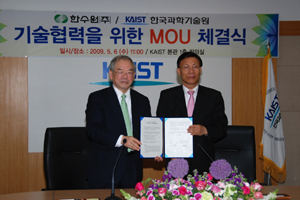 KAIST, KHNP Sign MOU on Nuclear Technology Development
KAIST signed a memorandum of understanding with the Korea Hydro & Nuclear Power Co. (KHNP) on Wednesday (May 6) to upgrade cooperation between the two organizations in nuclear power technology development.
On hand at the signing ceremony at KAIST were KAIST President Nam-Pyo Suh, KHNP President Jong-Shin Kim and other related officials.
The agreement calls for increased efficiency and synergy effect in the development of nuclear power generation by KAIST and KHNP to gain greater competitiveness in the exportation of nuclear power technologies.
KHNP is responsible for the operation of all nuclear and hydraulic power plants in Korea which supply about 40 percent of the nation"s electric power demand. It is the largest among the six power generating subsidiaries that separated from Korea Electric Power Corporation (KEPCO) in April 2001.
2009.05.07 View 13176
KAIST, KHNP Sign MOU on Nuclear Technology Development
KAIST signed a memorandum of understanding with the Korea Hydro & Nuclear Power Co. (KHNP) on Wednesday (May 6) to upgrade cooperation between the two organizations in nuclear power technology development.
On hand at the signing ceremony at KAIST were KAIST President Nam-Pyo Suh, KHNP President Jong-Shin Kim and other related officials.
The agreement calls for increased efficiency and synergy effect in the development of nuclear power generation by KAIST and KHNP to gain greater competitiveness in the exportation of nuclear power technologies.
KHNP is responsible for the operation of all nuclear and hydraulic power plants in Korea which supply about 40 percent of the nation"s electric power demand. It is the largest among the six power generating subsidiaries that separated from Korea Electric Power Corporation (KEPCO) in April 2001.
2009.05.07 View 13176 -
 Dr. Lyu Opens Oriental Health Clinic for KAIST Students on Campus
Dr. Keun-Chul Lyu, an Oriental medical scientist who donated property valued at 57.8 billion won (US$56 million) to KAIST last year, opened a health clinic and a medical research center for astronauts on the KAIST campus on Monday (April 13).
The opening of the two facilities represent the scientist"s lifelong wish to serve society by giving back his knowledge, experience and assets.
Monday"s opening ceremony was attended by 100-odd well-wishers including KAIST President Nam-Pyo Suh, Daejeon City Mayor Sung-Hyo Park and Ki-Ok Kim, President of the Korea Institute of Oriental Medicine.
Dr. Lyu"s Health Clinic which is equipped with eight units of medical treatment apparatus called "health booster" that Dr. Lyu developed will offer free medical care for KAIST students. "I would like to open the clinic as a space where students can receive medical treatment and rest anytime," Dr. Lyu said.
The research center for astronauts will focus on the researches to take care of health of space fliers and to help lessen the impact astronauts suffer when the spacecraft enters into the earth´s atmosphere.
On the same day, Dr. Lyu donated his lifetime collection of about 500 rare relic items such as Buddhist statues, ink stones and incense burners to KAIST.
2009.04.15 View 12064
Dr. Lyu Opens Oriental Health Clinic for KAIST Students on Campus
Dr. Keun-Chul Lyu, an Oriental medical scientist who donated property valued at 57.8 billion won (US$56 million) to KAIST last year, opened a health clinic and a medical research center for astronauts on the KAIST campus on Monday (April 13).
The opening of the two facilities represent the scientist"s lifelong wish to serve society by giving back his knowledge, experience and assets.
Monday"s opening ceremony was attended by 100-odd well-wishers including KAIST President Nam-Pyo Suh, Daejeon City Mayor Sung-Hyo Park and Ki-Ok Kim, President of the Korea Institute of Oriental Medicine.
Dr. Lyu"s Health Clinic which is equipped with eight units of medical treatment apparatus called "health booster" that Dr. Lyu developed will offer free medical care for KAIST students. "I would like to open the clinic as a space where students can receive medical treatment and rest anytime," Dr. Lyu said.
The research center for astronauts will focus on the researches to take care of health of space fliers and to help lessen the impact astronauts suffer when the spacecraft enters into the earth´s atmosphere.
On the same day, Dr. Lyu donated his lifetime collection of about 500 rare relic items such as Buddhist statues, ink stones and incense burners to KAIST.
2009.04.15 View 12064 -
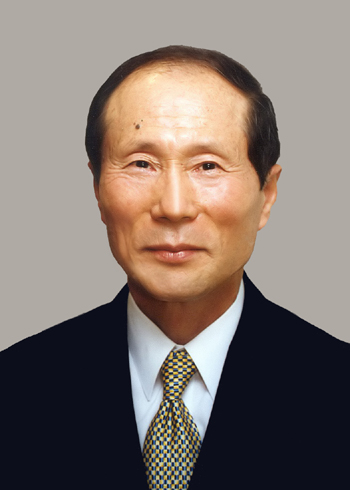 Respected Entrepreneur Chung Elected New Board Chairman of KAIST
Moon-Soul Chung, founder and former CEO of Mirae Corp. who is well known as the first-generation venture entrepreneur in Korea, was elected new chairman of the KAIST Board of Directors at the 193rd Regular Board Meeting held on March 20 in Seoul, school authorities announced Monday, March 23.
Born in 1938 in Imsil, North Jeolla Province, Chung graduated from the Oriental Philosophy Department of Won Kwang University. Chung founded Mirae Corp., a semiconductor equipment manufacturer, in 1983 and got his company listed on KOSDAQ and NASDAQ markets later. His business principles stressing transparency, integrity, and technology, earned the respect of Korean businesspeople.
In 2000, he suddenly announced retirement and handed over the presidency of his company to one of his managing directors. One year later, he donated 30 billion won to KAIST. It was by then the largest amount given by a single donor.
In 2007, he was awarded an honorary degree of doctor of engineering from KAIST. He formerly served as chairman of Venture Leaders Club, President CEO of Lycos Korea and chairman of the board of directors of Kookmin Bank.
2009.03.26 View 14898
Respected Entrepreneur Chung Elected New Board Chairman of KAIST
Moon-Soul Chung, founder and former CEO of Mirae Corp. who is well known as the first-generation venture entrepreneur in Korea, was elected new chairman of the KAIST Board of Directors at the 193rd Regular Board Meeting held on March 20 in Seoul, school authorities announced Monday, March 23.
Born in 1938 in Imsil, North Jeolla Province, Chung graduated from the Oriental Philosophy Department of Won Kwang University. Chung founded Mirae Corp., a semiconductor equipment manufacturer, in 1983 and got his company listed on KOSDAQ and NASDAQ markets later. His business principles stressing transparency, integrity, and technology, earned the respect of Korean businesspeople.
In 2000, he suddenly announced retirement and handed over the presidency of his company to one of his managing directors. One year later, he donated 30 billion won to KAIST. It was by then the largest amount given by a single donor.
In 2007, he was awarded an honorary degree of doctor of engineering from KAIST. He formerly served as chairman of Venture Leaders Club, President CEO of Lycos Korea and chairman of the board of directors of Kookmin Bank.
2009.03.26 View 14898 -
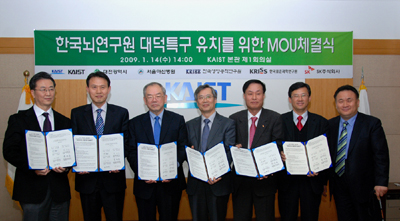 Six Organizations Join Forces to Induce Projected National Brain Institute to Daejeon
Six major organizations including KAIST have joined forces to help Daejeon City to win the government approval to build the envisioned Korean Brain Institute in Daedeok Research Complex.
The six organizations signed a memorandum of understanding on cooperating in establishing the government-funded institute built within the Daedeok Research Complex in the city of Daejeon, at KAIST on Jan. 14. The six organizations are KAIST, the Daejeon City Government, Korea Research Institute of Bioscience and Biotechnology, Korea Research Institute of Standard and Science, Asan Medical Center, and SK Corp., a pioneer in effective therapeutic invention for serious brain disorders.
The partnership of the six organizations is expected to bring a broad-based cooperation opportunities and create a massive synergy effect in the brain science researches and the development of new therapeutic treatment for brain disorders by combining their resources and infrastructures.
The six organizations have also built an international research network with such globally-renowned brain research institutions as RIKEN, a large natural sciences research institute in Japan, Max Plank Institute in Germany, Federal Institute of Technology, Lausanne, in Switzerland and Brain Research Institute of University of Queensland in Australia. The research network is under the support and guidance of Dennis Choi, a prominent neuroscientist who once served as the President of the Society for Neuroscience and is currently a professor in the Departments of Neurology and biology at Emory University.
The tentatively titled Korea Brain Institute is envisioned to help fight brain disorders and create Korea"s new growth engine, as well as lengthening life span, by conducting convergence researches in nero science, brain science and pharmacology. If the consortium of the six organizations wins the government approval to build the proposed institute within the Daedeok complex, the central government and the Daejeon city government are expected to pour a total of 329.7 billion won into the project by 2020.
2009.01.14 View 20164
Six Organizations Join Forces to Induce Projected National Brain Institute to Daejeon
Six major organizations including KAIST have joined forces to help Daejeon City to win the government approval to build the envisioned Korean Brain Institute in Daedeok Research Complex.
The six organizations signed a memorandum of understanding on cooperating in establishing the government-funded institute built within the Daedeok Research Complex in the city of Daejeon, at KAIST on Jan. 14. The six organizations are KAIST, the Daejeon City Government, Korea Research Institute of Bioscience and Biotechnology, Korea Research Institute of Standard and Science, Asan Medical Center, and SK Corp., a pioneer in effective therapeutic invention for serious brain disorders.
The partnership of the six organizations is expected to bring a broad-based cooperation opportunities and create a massive synergy effect in the brain science researches and the development of new therapeutic treatment for brain disorders by combining their resources and infrastructures.
The six organizations have also built an international research network with such globally-renowned brain research institutions as RIKEN, a large natural sciences research institute in Japan, Max Plank Institute in Germany, Federal Institute of Technology, Lausanne, in Switzerland and Brain Research Institute of University of Queensland in Australia. The research network is under the support and guidance of Dennis Choi, a prominent neuroscientist who once served as the President of the Society for Neuroscience and is currently a professor in the Departments of Neurology and biology at Emory University.
The tentatively titled Korea Brain Institute is envisioned to help fight brain disorders and create Korea"s new growth engine, as well as lengthening life span, by conducting convergence researches in nero science, brain science and pharmacology. If the consortium of the six organizations wins the government approval to build the proposed institute within the Daedeok complex, the central government and the Daejeon city government are expected to pour a total of 329.7 billion won into the project by 2020.
2009.01.14 View 20164 -
 Five KAIST Students Offered Internship from Qualcomm
Qualcomm Inc., a wireless telecommunications research and development company based in San Diego, California, has offered internship for five KAIST students of the Department of Electrical Engineering and Computer Science, university authorities said on Monday (Jan. 5).
The five students who are graduate and doctoral students studying communication and RFID (radio frequency identification) design will be working for six months at Qualcomm"s RFIC (radio frequency integrated circuits) Department in Santa Clara, Calif., as co-researchers. These interns will receive about $7,000 a month each with other benefits.
It is the first time that Qualcomm has offered internship for students outside the U.S., according to external relations officials at KAIST. Students who have shown outstanding research output during the internship period will be offered employment at Qualcomm.
"Qualcomm"s internship for KAIST students is designed to help young Korean talents to become professionals who will lead global advancement in the IT sector and strengthen its research network with Korea," Seung-Soo Kim, senior director of Qualcomm Korea, was quoted as saying.
Qualcomm plans to continue providing internship program for KAIST students, as well as pursuing joint research initiatives, the officials said.
2009.01.08 View 17495
Five KAIST Students Offered Internship from Qualcomm
Qualcomm Inc., a wireless telecommunications research and development company based in San Diego, California, has offered internship for five KAIST students of the Department of Electrical Engineering and Computer Science, university authorities said on Monday (Jan. 5).
The five students who are graduate and doctoral students studying communication and RFID (radio frequency identification) design will be working for six months at Qualcomm"s RFIC (radio frequency integrated circuits) Department in Santa Clara, Calif., as co-researchers. These interns will receive about $7,000 a month each with other benefits.
It is the first time that Qualcomm has offered internship for students outside the U.S., according to external relations officials at KAIST. Students who have shown outstanding research output during the internship period will be offered employment at Qualcomm.
"Qualcomm"s internship for KAIST students is designed to help young Korean talents to become professionals who will lead global advancement in the IT sector and strengthen its research network with Korea," Seung-Soo Kim, senior director of Qualcomm Korea, was quoted as saying.
Qualcomm plans to continue providing internship program for KAIST students, as well as pursuing joint research initiatives, the officials said.
2009.01.08 View 17495 -
 Prof. Seong Publishes English Book on Reliability in Digital Control Systems
Prof. Poong-Hyun Seong of Department of Nuclear and Quantum Engineering has recently published an English-language book on reliability and risk issues in large scale safety-critical digital control systems used in complex facilities such as nuclear power plants.
The book entitled “Reliability and Risk Issues in Large Scale Safety-critical Digital Control Systems” is a result of Prof. Seong’s collaboration with some KAIST graduates who used to be under his guidance. The 303-page publication has been published by Springer, one of the world’s leading publishers of academic journals, as part of the Springer Series in Reliability Engineering.
The book consists of four parts; part I deals with issues related to hardware, part II software, part III human factors and finally the last part integrated systems. It can be purchased through some on-line book stores such as Amazon.com.
Prof. Seong served as an editor-in-chief for Nuclear Engineering and Technology (NET), an international journal of Korean Nuclear Society (KNS), from 2003 to 2008. He also worked as a chair of the Human Factors Division (HFD) of American Nuclear Society (ANS) from 2006 to 2007. Prof. Seong is now a commissioner of Korea Nuclear Safety Commission which is the nation’s highest committee on Nuclear Safety.
2008.12.26 View 19219
Prof. Seong Publishes English Book on Reliability in Digital Control Systems
Prof. Poong-Hyun Seong of Department of Nuclear and Quantum Engineering has recently published an English-language book on reliability and risk issues in large scale safety-critical digital control systems used in complex facilities such as nuclear power plants.
The book entitled “Reliability and Risk Issues in Large Scale Safety-critical Digital Control Systems” is a result of Prof. Seong’s collaboration with some KAIST graduates who used to be under his guidance. The 303-page publication has been published by Springer, one of the world’s leading publishers of academic journals, as part of the Springer Series in Reliability Engineering.
The book consists of four parts; part I deals with issues related to hardware, part II software, part III human factors and finally the last part integrated systems. It can be purchased through some on-line book stores such as Amazon.com.
Prof. Seong served as an editor-in-chief for Nuclear Engineering and Technology (NET), an international journal of Korean Nuclear Society (KNS), from 2003 to 2008. He also worked as a chair of the Human Factors Division (HFD) of American Nuclear Society (ANS) from 2006 to 2007. Prof. Seong is now a commissioner of Korea Nuclear Safety Commission which is the nation’s highest committee on Nuclear Safety.
2008.12.26 View 19219